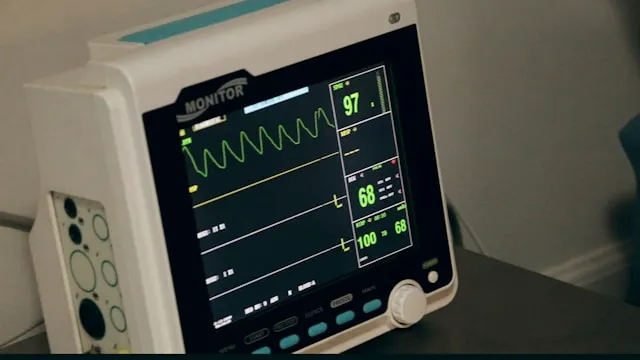Though the exact reason has not yet been pinned the cases of congenital heart defects are on the rise among newborns.
Research shows that nearly 1% of babies are born with an imperfection in the heart's structure.
It is a matter of great worry and anxiety for the parents about their child's health and long-term future. Until recently, for newborns, only temporary repairs were done and the permanent treatment was postponed for a later time in childhood. However, with the advancement in medical science and technology, corrective surgery, for babies as young as a few days old, is a reality. Even severe defects can be treated now. This comes as a big respite for concerned parents.
What is congenital heart defect (CHD)?
We first need to understand how the heart works.
The human heart has four chambers - the upper two are known as the atrium and the lower two are known as the ventricles. The heart is divided into left and right halves so the left half has - the left atrium and left ventricle; and the right half has - the right atrium and right ventricle. There are four valves in the heart, which open on one side; this is to allow blood to flow in one direction. The right side of the heart moves blood to the lungs through pulmonary arteries where it picks up oxygen and then returns to the left side of the heart through pulmonary veins. The left side of the heart has a large artery called the aorta which pumps this oxygenated blood to the entire body - every cell.
During pregnancy sometimes the structure of the heart is not properly formed. This leads to congenital heart defects. Congenital means 'present at the time of birth'.
There are more than 35 types of CHD most of which fall under the following types:
- Holes in the walls of the heart chambers or the blood vessels originating from the heart. If the hole is in the wall between the right and left ventricles, it is called ventricular septal; between right and left atrium, it is called atrial septal. If the hole is between the pulmonary artery and the aorta, it is called patent ductus arteriosus.
- Obstructed blood flow due to narrow blood vessels and valves. Pulmonary stenosis (narrowing of the pulmonary valve) and Aortic stenosis (narrowing of the aortic valve) are the most common ones.
- Abnormal formation of the blood vessels.
- Abnormalities in the heart valves due to which they are unable to open and close properly. Examples include Ebstein anomaly (malformation of tricuspid valve) and Pulmonary atresia (formation of a thin sheet of tissue instead of the valve).
- The occurrence of more than one defect. For example, Tetralogy of Fallot is the most serious, as the name implies, it is a combination of all the above four types of defects stated above.
What are the causes of congenital heart defects?
The underlying causes of CHD are not yet clear but it is largely believed that certain environmental and genetic factors increase the risk.
- Chronic diseases like diabetes.
- Rubella or German measles
- Certain medications such as anti-acne and anti-seizure drugs.
- Alcohol consumption during pregnancy
- Hereditary
What are the symptoms of congenital heart defects?
Generally, heart defects are detected before birth through a pre-natal diagnosis like fetal echocardiography. Otherwise, other noticeable signs and symptoms in newborns include:
- Shortness of breath during feeding
- Poor weight gain
- Blue-grey skin color
- Breathing difficulties
- Swelling of legs, abdomen, and around eyes.
How to diagnose congenital heart defects?
Congenital heart defects are usually suspected before birth during a routine ultrasound. If suspected, then the obstetrician suggests a fetal echo-cardiogram to confirm the diagnosis. In the case of newborns, chest X-ray, ECG, and echo-cardiogram are done to check for heart defects.
Surgical Treatment of Congenital Heart Defect in Newborns
Though some CHD can be treated with medications in severe cases, surgery is recommended. Unlike before when only palliative treatment was possible for newborns, nowadays corrective surgery is a reality. Through early recognition of congenital heart defects in newborns as well as perinatal intensive care, newborns are taken to the pediatric cardio-surgery department much faster after birth as compared to before.
Advancements in peri-operative, anesthetic, and post-operative care have helped to reduce the mortality rates. Peri-natal care helps to reduce the effects of hypoxemia (lack of oxygen), to support a failing heart, and to enable blood circulation. With the availability of microsurgical techniques to operate on newborns, even as old as a few weeks, can undergo corrective surgery. Even post-operative techniques to stabilize vital functions of the body like renal, respiratory, and circulatory as well as early nutrition of the newborn.
For severe cases of CHD like hypoplastic left heart syndrome, the surgery is complicated and is performed in stages. There has been a dramatic improvement in the survival rates of newborns with congenital heart defects.
List of Best Cardiologists in India
Best Cardiologists in Delhi | Best Cardiologists in Mumbai | Best Cardiologists in Kolkata | Best Cardiologists in Hyderabad | Best Cardiologists in Chennai | Best Cardiologists in India

Reviewed by







